Memorable 2015 fieldwork moments
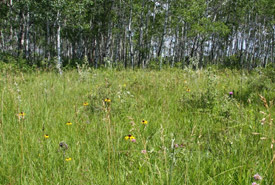
Tall grass prairie in NCC's Interlake Natural Area (Photo by Cary Hamel/NCC)
I asked the Manitoba Region’s talented group of field biologists, “What was your most inspiring or challenging fieldwork moment of this past summer?” Here are some of the highlights of last year's field season in Manitoba:
Rachel Cherka, Imperial Oil intern/Assistant conservation biologist
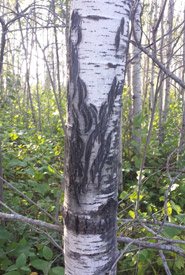
Black bear scratching post (Photo by NCC)
We were on the Batte property in the tall grass prairie to do some grazing assessments. We had just finished one transect in the middle of a large grassland and were heading towards the forest, where our second transect was located. As we neared the forest, I saw four black shadows moving along the tree line. As I told my field partner to stop, the four black bears turned and stared at us.
Two of the bears stood on their hind legs to look at us, but we were too busy backtracking to take any photos. As we got further away, the bears scurried into the forest right towards the transect we were heading to.
We didn’t see or hear the bears for the rest of the day but evidence of their presence caused us to carry out long, loud and boisterous conversations in hopes they wouldn’t visit us again.
Carly Dow, LIS coordinator
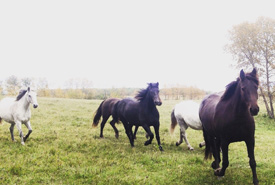
Galloping horses at NCCs Riding Mountain Natural Area, MB. (Photo by NCC)
Manitoba’s parkland just got even more dreamy. There’s nothing quite like having a group of horses thunder up to you in the field to say hello and nuzzle for treats.
On that day when they discovered we had no food, the horses took off at a full gallop and we could watch them moving together over the rolling hills. I took in the magical moment, and then looked down at my clunky hiking boots and felt distinctly ungraceful.
Monica Reed, conservation science intern
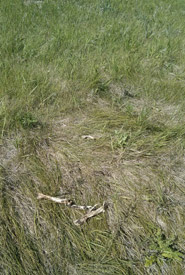
Wolves were here! (Photo by NCC)
On a beautiful sunny day near the end of July, fellow intern Jordan and I were assessing wetlands and grasslands on Elk Glen, a Nature Conservancy of Canada (NCC) property that borders Riding Mountain National Park. After hours of exploring, we came across a patch of prairie grass that had been completely flattened.
The meager remains of a beaver lay in the center of the patch. We could tell by the size and abundance of scat around the area that we had found a wolf kill site!
Stupidly, we followed a worn path down to the nearby river. While gazing out at the former beaver’s lodge, we heard a massive thump.
"Time to go!" exclaimed Jordan in a restricted voice that suggested he was thinking the same thing as I was...wolves! Moving as fast as our chest waders would allow, we headed for the vehicle. I scrambled through the grass, trying hard to focus on the ground in front of me. Every time my gaze would stray to the stands of trembling aspen that bordered the prairie, I’d imagine wolves running amongst the trunks.
At one point Jordan stopped and started digging in his backpack. I told him I was really freaked out and wanted to keep moving. He seemingly ignored me and kept rifling through his bag.
Finally, he found what he was looking for — a pocketknife! I still don’t know if it was for dramatic effect, or if he really thought we might have to defend ourselves from a pack of wolves using a two-inch blade! After the longest 20 minutes of my life, we arrived safely to the car. We saw a black bear later that evening, but in comparison to a wolf pack, a single black bear seemed like a teddy.
Although this recollection sounds like a scene from a thriller, wolves are quite wary of people and conflicts with humans are rare. This website provides an overview of wolf behavior, strategies to avoid conflict, and advice in the rare chance that you have an encounter.
Cary Hamel, Manitoba conservation science manager
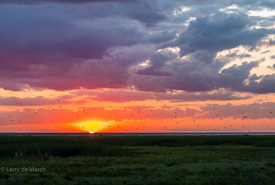
Turtle River Marshes sunset (Photo by Manitoba Scientific Advisory Committee member Larry DeMarch)
On the evening of June 16, I explored a portion of the Turtle River Marshes as part of NCC's annual Scientific Advisory Committee (SAC) survey. The area is part of a large coastal marsh complex linked to Dauphin Lake, and it is teeming with life.
During our short visit SAC members identified 15 different bird species, including various ducks, coots, terns, snipe and bitterns. An estimated 10,000 Franklin’s gulls flowed by continuously, parallel to the lakeshore, presumably feasting on the emerging mayflies that were clouding the sky.
Before long the group went silent, absorbing this incredible display of abundant life. As a group we watched as the sunset slowly slipped below the horizon over the lake.


